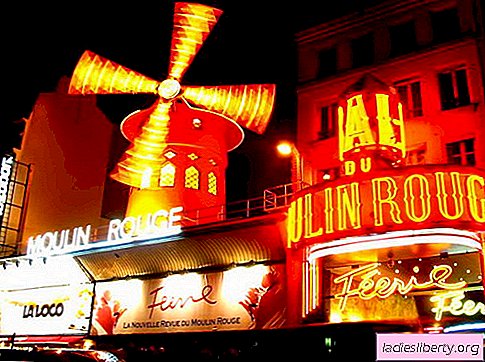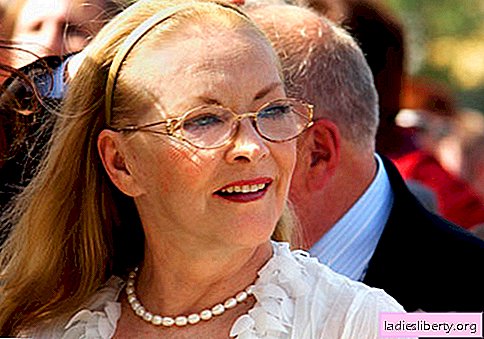
This day in 1921 was the beginning of the activities of the State Insurance of the RSFSR, so it is considered the foundation day of domestic insurance activities.
This holiday has been celebrated since 1979, after the adoption of the Berne Convention, dedicated to the conservation of wild European nature. It was established so that people would think about what influence they exert on nature through their activities, and realize the need for a careful attitude to the living world around us.
October 6 is the Day of Archivist in Belarus. In 1863, the first centralized state archive of assembly books was opened in Vitebsk. Today, the country's archival repositories hold more than 12 million documents, and the archival sphere is represented by 169 subordinate organizations. Archival documents are the property of the state, which does everything so that descendants can get acquainted with the documentary wealth of Belarus.
This holiday is celebrated on the first Saturday of October. Today in Armenia there are 42 thousand teachers, of which about 35 thousand are women, 7 thousand are men. Since September 2010, the Government of Armenia made a proposal to adopt an amendment to the law on public holidays and to establish the celebration of Teacher’s Day on October 5 (when World Teacher’s Day is celebrated).
This holiday is associated with the beginning of the fourth Arab-Israeli war in 1973. In fact, Israel defeated it, however, the Egyptians believe that during this military campaign the myth of Israel's invincibility was dispelled.
Memorial Day for the victims of the 1948 Turkmen earthquake
On October 6, Turkmenistan recalls those who died in the earthquake of 1948, which, according to various sources, was from 100 to 170 thousand. At the epicenter of the earthquake, near the village of Kara-Gaudan, its power was up to 10 points on the Richter scale. The capital of Turkmenistan, the city of Ashgabat, which was about 25 kilometers from that place, was completely destroyed. Over time, it was rebuilt, but in compliance with the recommendations of seismologists. The earthquake in Ashgabat was recognized by UNESCO as one of the most devastating disasters of the last century. On this day, people do not work, they lay flowers at the memorial to the victims of the disaster and participate in memorial feasts, reading prayers for the souls of the dead.
International Film Festival "Golden Orange" in Antalya
This film festival, founded in 1964 by the Antalya Foundation for Culture and Art, is the oldest and most famous in Asia. In Turkey, he is called the Oscar of the national film industry. At first it was held with the aim of supporting and developing Turkish cinema, and since 1978 the festival has become international. Today, "Golden Orange" is a world-famous festival, it annually attracts numerous filmmakers and moviegoers from many countries. The symbol of the festival is an orange.
Pilar Festival in Zaragoza
This festival is held in honor of the Virgin Pilar, the patroness of the city and all of Aragon. It takes place on the week of October 12th. The festival was first mentioned in 1723, and it received official recognition in 1807. In those days, the festival program included not only religious ceremonies, but also festivities and bullfighting, which is an integral part of any Spanish celebration. Since 1873, the events of the festival were supplemented by an equestrian parade, and since 1894, a hot dance competition. Today, on this day, many people from different countries, wearing their national costumes, lay baskets of flowers and fruits at the statue of the Virgin Mary.
Seoul International Fireworks Festival
The Seoul International Fireworks Festival is one of South Korea's biggest events. Since 2000, every October, on the banks of the Hangan River, the best pyrotechnics of the world create this spectacle of unsurpassed beauty, performed using the latest developments in the field of pyrotechnic technologies. The festival is attended by pyrotechnic teams representing Japan, China, Korea, the USA, Australia, Italy, Canada, Hong Kong, etc., each of which has a unique national theme. In total, about 50 thousand fireworks are launched at the festival, and this show annually attracts about a million visitors.
On October 6, they honor the virgin Raisa (Iraida) of Alexandria, the holy martyr, executed under the emperor Maximilian at the beginning of the 4th century.
On this day in Russia, poor people wondered about their fate. Filling two jugs at the confluence of two rivers with the same amount of water, they brought them home and watched from which jug the water evaporates faster. The waning of water from a vessel filled in a more full-flowing river portended a continuation of poverty.
Iraida marked the arrival of real cold weather. On this day, the housewives prepared a lump - a dish of crushed boiled potatoes, flavored with eggs and milk and baked on an rye cake in the oven.
On this day Andrei, Ivan, Innocent, Iraida, Nikolai, Peter, and Rais are honored.
October 6, 1889 In Paris, the Moulin Rouge night cabaret was opened, which means “Red Mill” in French. It was founded by Joseph Oller and Charles Sidler. A peculiar symbol of the "Moulin Rouge" was the cancan, which was danced by smartly dressed dancers. The Moulin Rouge was attended by both the middle class and aristocrats. Among the regulars of the Moulin Rouge were Picasso, Oscar Wilde, the Prince of Wales and many other famous people.
October 6, 1927 in New York, the first sound film, "Jazz Singer", was released. It was released by Warner Bros. The painting, which was a huge success, allowed the company to make a profit of about 3.5 million dollars.
October 6, 1952 at the XIX Congress of the CPSU adopted the directives of the fifth five-year plan for the development of the national economy. They envisaged an increase in industrial production, which by 1955 was to be 70% in comparison with 1950. It was envisaged that this growth would affect not only the manufacturing sector, but also the improvement in the provision of consumer goods, as well as the standard of living of the population. However, most of the plans of the fifth five-year plan were not destined to come true, especially in the agricultural sector.
October 6, 1977 first flew the MiG-29 fighter. When it was created, the designers had to overcome many technical and organizational difficulties, however, the flight tests that began on that day proved the correct choice of the design of the fighter and the compliance of its flight performance with the most stringent requirements. Compared with foreign counterparts, the MiG-29 has unrivaled maneuverability in a unique range of speeds and altitudes, a more effective weapon system for conducting highly maneuverable air combat and a powerful frame structure.
Charles Le Corbusier (1887-1965), the great French architect, artist and master of modern architecture. Among his works are the building of the Paris Salvation Army Center, the Ministry of Education in Rio de Janeiro, the Swiss Pavilion in Paris, the Central Union in Moscow, the National Museum in Tokyo, and the UN New York headquarters; Harvard University Cultural Center (USA), etc.
Juozas Budraitis (born 1940), the famous Soviet and Lithuanian theater and film actor, People's Artist of Lithuania. The actor made his debut in the film "Nobody Wanted to Die" in 1965. Among his other works are the films “Two Comrades Served”, “This is the sweet word freedom”, “Rich man, poor man”, “Dangerous age”, “With you and without you ...”, “Return from orbit”, “Man in civilian clothes” and many others.
Alexander Shilov (born in 1943), the famous Soviet and Russian artist, known throughout the world. His works conquered France, Germany, Portugal, Canada, Japan, Kuwait, the United Arab Emirates, etc. The main focus of his work is realism, a portrait genre. Shilov surprisingly realistically manages to convey the character of a person, his mood and psychological state. He is the winner of many prizes, awarded numerous orders and medals.
Francis Smuglevich (1745-1807), a well-known Polish artist, author of numerous paintings for churches in Warsaw and other Polish cities in Poland, the founder of a private school of painting in Warsaw and the department of painting at the Main Vilnius School, which later became the Imperial University of Vilnius.
Louis Philippe I (1773-1850), the last French monarch who bore the title of king. The reign of Louis Philippe was remembered as a period of scientific and technological progress and the French industrial revolution. The February Revolution of 1848 ended for Louis Philippe with abdication.
Reginald Fessenden (1866-1932), Canadian and American inventor, holder of more than 500 patents, creator of the spark-rotor transmitter, alternator transmitter and many other inventions, including the military industry.
Veriko Anzhaparidze (1900-1987), Soviet Georgian theater and film actress, representing the romantic trend of Georgian theater. Veriko was called the Georgian Komissarzhevskaya, during her lifetime she became a legend of the Georgian theater and cinema and the owner of numerous awards.
Tour Heyerdahl (1914-2002), the famous Norwegian traveler, who was also an ethnographer and archaeologist. During the war, Tours served as a radio operator-saboteur, freeing Norway from the Nazis, which subsequently greatly helped him during his expeditions. Heyerdahl's most famous voyage is sailing on a Kon-Tiki raft, which in 1947 he made with five of his like-minded people. He described this journey in his book Journey to Kon-Tiki, which became a bestseller.











